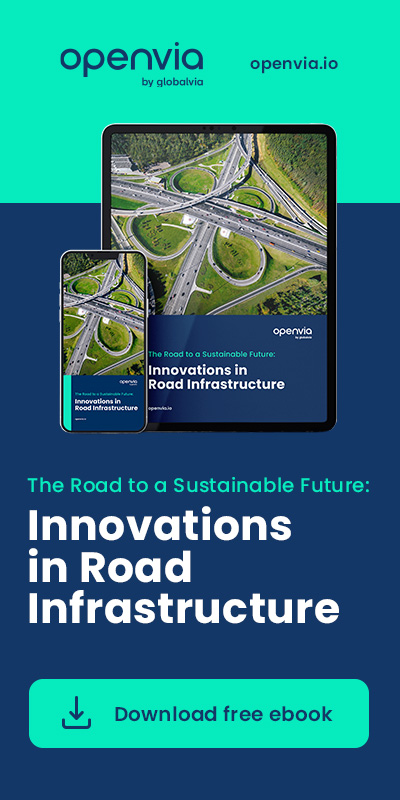Urban mobility is undergoing a major transformation, redefining the way you move through cities and interact with transportation systems. Commuting, navigating crowded streets, and managing urban logistics are all experiences that highlight how the future of urban mobility will shape daily life and the efficiency of entire metropolitan regions. Understanding these changes is crucial if you want to anticipate trends, take advantage of new technologies, and prepare for smarter, more sustainable infrastructure.
Key trends shaping the future of urban mobility
The evolution of urban mobility is being driven by a combination of technological innovation, social change, and environmental imperatives. The rise of smart urban mobility is at the core of this shift. You can already see the impact of connected infrastructure, real-time traffic analytics, and digital platforms that integrate various transportation modes. By 2030, cities will rely even more on data-driven solutions to manage the increasing complexity of urban travel.
One significant trend is the growth of Mobility as a Service (MaaS). MaaS platforms unify public transport, ride-hailing, micromobility, and even parking information in a single, user-friendly interface. You can plan, book, and pay for an entire trip across multiple modes without switching between apps. For infrastructure managers, this trend creates opportunities to optimize traffic flow, monitor demand, and improve the user experience.
Another trend is the integration of advanced transportation technology into urban systems. This includes AI-powered traffic prediction, IoT-enabled sensors embedded in roads, and the development of autonomous vehicle networks. These tools not only improve operational efficiency but also reduce accidents, emissions, and congestion. Smart intersections, adaptive traffic signals, and automated public transport hubs are likely to become standard in the coming decade.
Micromobility also continues to grow as a core element of urban mobility. E-bikes, scooters, and shared bicycles are changing how short trips are made in cities. Their widespread adoption requires dedicated lanes, parking solutions, and safe connectivity with public transport hubs. For city planners, this trend highlights the need for infrastructure that accommodates multiple modes of transport without increasing congestion.
Finally, the focus on sustainability is accelerating the transition toward greener transportation systems. Electrification of public transport, the creation of low-emission zones, and policies promoting walking and cycling all point toward a future where urban mobility is cleaner and more energy-efficient.
How to adapt to the growing demand for smart transportation
As demand for smart urban mobility increases, infrastructure managers need to rethink how they plan, monitor, and maintain transportation networks. The first step is to embrace data integration and digitalization. Relying on real-time traffic data, predictive analytics, and cloud-based platforms allows cities to respond dynamically to fluctuations in mobility patterns.
You can start by implementing adaptive traffic management systems. These solutions use AI and IoT data to adjust signal timings, reroute traffic during peak hours, and reduce bottlenecks. Real-time insights also support emergency response coordination, minimizing delays in critical situations.
Another adaptation strategy is to promote seamless connectivity across different mobility services. Integrating Mobility as a Service platforms with urban planning tools enables a smoother user experience and better use of resources. For instance, aligning public transport schedules with bike-sharing or micro-shuttle services encourages multi-modal journeys that reduce car dependency.
Infrastructure managers should also plan for advanced transportation technology adoption. Autonomous buses, intelligent parking systems, and drone-assisted logistics will require digital infrastructure capable of handling massive amounts of data. Deploying edge computing solutions alongside cloud services ensures low-latency responses for time-critical applications like accident detection or real-time routing.
Public engagement is essential for a successful transition. As urban mobility evolves, communicating the benefits of new systems encourages acceptance and responsible usage. Education campaigns about safety, sustainability, and shared mobility options help residents adapt to changing transport environments.
Lastly, partnerships between public institutions and private providers will be key. Smart transportation often depends on collaboration with technology companies, startups, and utility providers. Joint ventures and data-sharing agreements allow cities to accelerate innovation while maintaining oversight of critical infrastructure.
The impact of sustainability on urban infrastructure
Sustainability is now central to the design of future transportation systems. For infrastructure managers, this means that every decision about roads, transit, and logistics must also consider environmental performance.
The first major impact comes from the push for sustainable mobility. Cities worldwide are adopting policies to reduce emissions, improve air quality, and minimize energy consumption. Expanding electric bus fleets, building EV charging stations, and supporting bike-friendly infrastructure are practical steps toward greener mobility.
Second, sustainable urban planning encourages the creation of mixed-use spaces where walking, cycling, and public transit become the most convenient options. Reducing dependence on private vehicles not only lowers emissions but also frees up space for green areas and community services.
Another critical consideration is the circular economy approach to infrastructure. Building and maintaining roads, bridges, and transit hubs with recycled materials or energy-efficient designs reduces the environmental footprint of urban development. Integrating smart energy grids and renewable sources into transport infrastructure strengthens the long-term sustainability of urban mobility.
Climate resilience is also part of sustainable planning. As extreme weather events become more frequent, infrastructure managers must ensure that transportation networks can withstand floods, heat waves, and other climate-related challenges. Monitoring systems, predictive maintenance, and flexible route designs are essential to protecting urban mobility from environmental disruptions.
Looking ahead to the next decade
Urban mobility will continue to evolve rapidly, and the next decade will test the adaptability and vision of infrastructure managers. By embracing smart urban mobility, Mobility as a Service, and advanced transportation technology, you can create transport systems that are more efficient, safe, and user-friendly.
At the same time, focusing on sustainable mobility ensures that future cities remain livable and environmentally responsible. By integrating digital solutions with green infrastructure and forward-thinking policies, urban mobility can become a powerful driver of both economic growth and environmental protection.
The challenge for infrastructure managers is to balance innovation, sustainability, and public needs while preparing for the complexities of the future. Those who succeed will shape cities where moving around is easier, cleaner, and smarter, setting a new standard for urban life in the 2030s and beyond.






